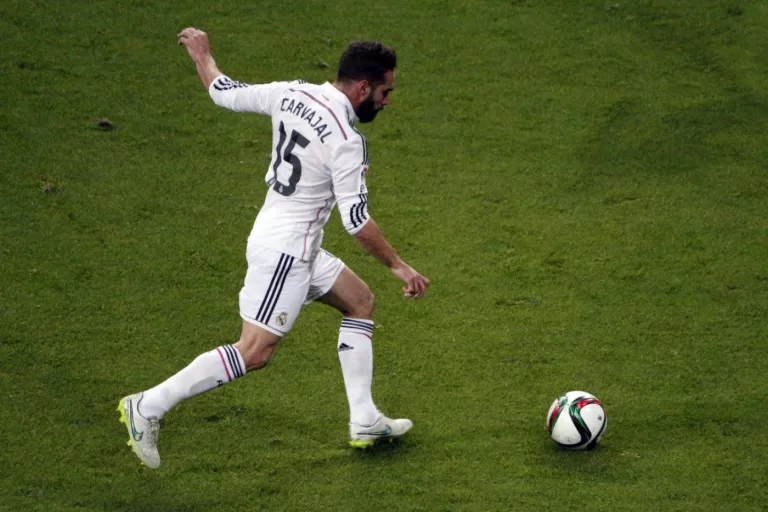Real Madrid are now growing into a club which develops raw talent instead of buying household names…
Los Blancos are notorious for the Galácticos era – in which the club broke the bank for world-class players who had already established themselves in the footballing world. Real Madrid have spent lavishly in previous years to bring Ballon d’Or winners to the Bernabéu; Luis Figo in 2000, Zinedine Zidane in 2001, Ronaldo de Lima in 2002, Michael Owen in 2004, and finally Ronaldo and Kaka in 2009 are some of the players who joined after winning the illustrious award. David Beckham, Gareth Bale, and James Rodriguez are some of the other major stars lured by Real Madrid over the years.
The Galácticos era may not have delivered much success for Madrid, but the past five years have cemented their legacy with a mixture of world-beaters and young talent spurring the club to new heights. Real Madrid have not made any marquee signings since James Rodriguez was bought from Monaco for €75 million four years ago. Instead, they’ve signed a number of youngsters from clubs in Spain and have utilised an intelligent strategy for their development, with a combination of loans and buy-back clauses allowing them to achieve this feat.
Buy-back clauses, a rather cunning transfer fail-safe, allow the parent club to re-sign players after selling them off to another club. The player’s price is agreed upon by the two clubs and it may vary based on the number of seasons played or on the quality of their performances. This enables the parent club to bring back a player who could not be given an opportunity in the first-team before, but has impressed for his new suitors.
Real Madrid have taken advantage of this clause in bringing the back the likes of Dani Carvajal from Leverkusen, Alvaro Morata from Juventus, Lucas Vasquez from Espanyol, and Casemiro from FC Porto. Carvajal and Casemiro are now permanent fixtures in the Real Madrid line-up, and played an essential part in winning three Champions League on the trot under Zidane. Alvaro Morata played the back-up role to perfection in 2016/17, netting 20 times for Los Blancos. Lucas Vasquez was considered an essential substitute by Zidane and contributed greatly to their recent success, earning him a place in the Spain squad for the 2018 World Cup.
"Casemiro is one of the best, if not the best in the defensive midfield position."@realmadrid midfielder Casemiro holds the key to Brazil's chances in Russia, says 2002 #WorldCup winner @GilbertoSilva
Read the feature 👉 https://t.co/5245gDQ3m9 | @OliverYew pic.twitter.com/wCM2lqu0EP
— Sky Sports Football (@SkyFootball) June 10, 2018
Real Madrid have also recently activated the buy-back clause of Spanish midfielder Omar Mascarell, who they sold to Eintracht Frankfurt a couple of seasons ago. Similarly, Mariano Diaz left the Bernabéu for Lyon last summer, and is rumoured to have a buy-back clause in his contract. If that’s the case, then the the Dominican will be expected to make a comeback after notching 21 goals for the French side – especially with Madrid’s dearth of strikers.
Buying rising young stars and instantly loaning them back to their previous club has also become a trend at Real Madrid. And there is no doubt this system is working wonders for Los Blancos, with Marco Asensio being the prime example. Real Madrid have signed a number of promising under-20 players and loaned them out for a season or two to accelerate their growth. Jesus Vallejo, Martin Ødegaard, Sergio Diaz, Vinicius Jr. and now Rodrygo are other stars who’ve been subject to this strategy.
Marco Asensio
Asensio was signed in 2014 as an 18 year-old promising youngster from Mallorca for a cheap price of €4 million. He spent a season on loan with his previous club in the second division and then joined Real Madrid for the pre-season festivities. Deemed unprepared for the first team by Rafa Benitez, he was loaned to Espanyol. After an impressive outing with the Catalan side, Asensio became a part of the squad in 2016. Goals in the UEFA and Spanish Super Cups, El Clásico, La Liga, and in important Champions League matches, including one in the 2017 final have seen Asensio become one of the hottest prospects in Europe right now and the midfielder is ready to inspire Spain towards World Cup glory in Russia.
Jesus Vallejo
Vallejo followed an identical path to the Real Madrid team. Bought from Spanish second division side Real Zaragoza, he spent a season on loan there and another season on loan in Germany with Eintracht Frankfurt. With the departure of Pepe in 2017, Zinedine Zidane opted to place his trust in Vallejo instead of making a big defensive signing. Despite not featuring much due to injuries and the established Ramos-Varane partnernship, several major outings, including one in the Champions League quarter-final against Juventus, added to his experience and he is ready to feature more for the team next season.
Zidane won the Champions League three years in a row with a £10m budget. pic.twitter.com/TFCx80gs3U
— ESPN FC (@ESPNFC) June 1, 2018
Other future stars
Martin Ødegaard has shown his quality on loan with Dutch side Heerenveen; Vinicius Jr., currently on loan at Flamengo, became the most expensive under-18 player in football after signing for Real Madrid last season; Sergio Diaz is with Lugo in the Segunda Divisio; and Rodrygo is set to be signed from Santos – with all the aforementioned players looking set to be part of future Real Madrid teams.
This clearly indicates the direction in which Real Madrid are headed. Zidane has proven this to be a viable strategy as well, winning an array of titles with a net spend of just €10 million, relying on upcoming talent to plug the gaps.
